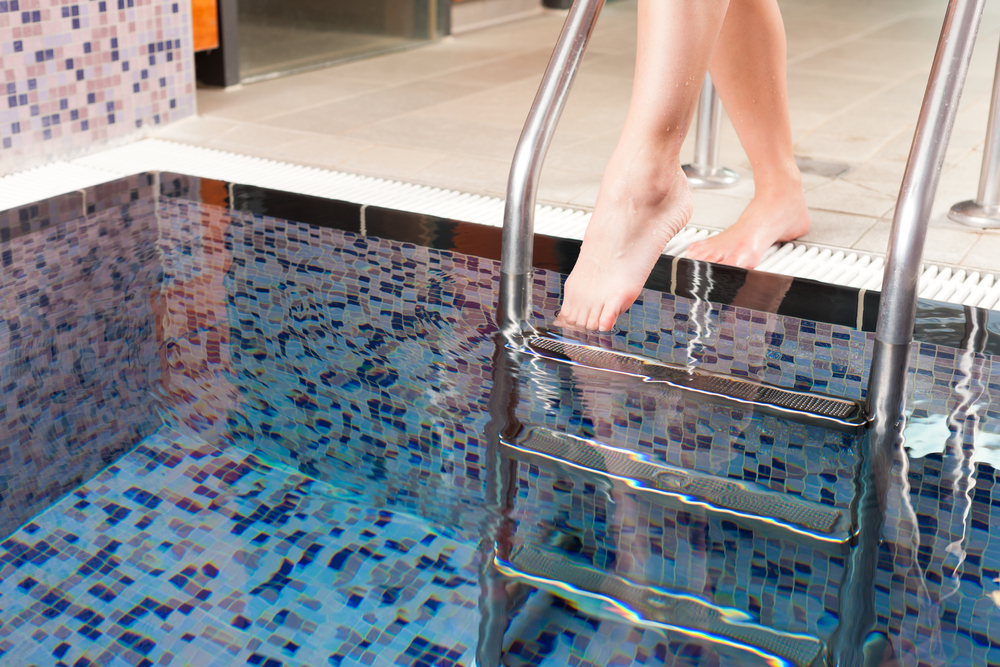
Many people's ultimate desire has always been to have a swimming pool on the estate where they may dip or swim whenever they wish. Choosing a pool that best suits one's style, usage, and budget, on the other hand, maybe easier said than done. Pools presently come in various forms, styles, sizes, and price ranges, for better or worse. Other considerations include material availability and estate land area. Here's everything you need to know about these stunning pools, including how to build one in your backyard.
Plunge Pool
A plunge pool is a small or compact swimming pool widely used in areas where space is limited. The normal plunge pool is 13 to 23 feet long and 7 to 10 feet wide, making it slightly larger than a typical hot tub. If you choose a fiberglass pool or a concrete plunge pool, they can be constructed as inground plunge pools or utilized above ground.
The modest size of a plunge pool makes it ideal for wading into and cooling down in the summer, as well as hydrotherapy and low-impact training. Unlike hot tubs and swim spas, Plunge pools do not usually contain spa jets or hot water, but those elements can be added as adaptations.
Benefits of Plunge Pool
When it comes to designing a place, there are numerous reasons to go for a plunge pool:
Requires Less Room
Small plunge pools are an excellent choice for outdoor locations where a typical or full-size pool would be too large, such as a small backyard. A plunge pool, decking, water features, and fire pits can be used to create a spectacular outdoor living experience with a modest amount of real estate for homeowners with small spaces or smaller lots.
Maintenance is Easier
Because there is less water in a tiny pool, dirt and debris will accumulate less, making upkeep easier. Most plunge pools can be cleaned by hand using a manual vacuum or a scoop net, and small pool covers are simple to remove.
Cost-effective
Because there would be less land to clear and dig, the plunge pool installation cost will be substantially lower. Pool installation for plunge pools can also be far more cost-effective DIY projects than pool installation for larger pools if you do not want to pay a professional installer, such as a pool builder or pool contractor.
 Infinity Pool
Infinity Pool
Infinity pools are the pinnacle of luxury. Wet edge pools, also known as negative edge pools, appear to have no pool wall at one end, allowing the water to fall over the edge, providing you a clear and unrestricted view of your surroundings, and allowing you to blend in perfectly with the environment while in the pool. They provide the ideal perspective for looking down on a bustling urban or a serene rural scene. They add to the calm and relaxation of your swimming experience by allowing you to enjoy unobstructed vistas while listening to the soothing sound of flowing water.
These stunning pools can be seen on the rooftops of luxury hotels, private spas, and the affluent and famous hilltop estates and have become the ideal emblem of grandeur on Instagram! But, thanks to recent advancements in fiberglass swimming pool design, you may now have your backyard infinity pool – and it might be less expensive than you think.
Benefits of Infinity Pool
There are various reasons to choose an infinity pool when it relates to creating an interior:
Eye-Catching and Artistic
The attractiveness of an infinity pool is generally mentioned as one of the first advantages. Swimmers' perceptions are not cluttered by the sight of concrete steps and obstacles because these pools appear to have no edge. Rather, the edge blends into the background. Weirs, glass walls, and other hidden barriers make this feasible.
Friendly to the Environment
High-capacity pumps and water collection troughs are required for infinity pools. Some property owners are wary about these facilities, thinking that water and money may be wasted. On the other hand, the pumps are only turned on while the pool is in use. In the long term, this saves water. It also helps to eliminate stagnant water puddles around the pool. Water collection troughs also aid in water conservation. In reality, the water can be "recycled" back into the main pool as needed if adequately filtered. As a result, the pool's total cost and carbon footprint are reduced.
For Families, Safe and Fun
Pool owners, particularly those with little children, are concerned about slipping off the infinity pool's edge. Owners are occasionally concerned about their pool's ability to be covered. These pools are even referred to as harmful on some websites. In actuality, if properly constructed, infinity pools are completely safe. Most infinity pool contractors have received "water-shaping" training. That instance, before and during the construction process, they must exhibit an expert understanding of collection troughs, water levels, and pH levels.
All Things Considered!
 In Europe, particularly France, the infinity and plunge pool have become popular as a pool option. Today, these pool styles are gaining favor in the whole world. Choose the type which complements your home's interior!
In Europe, particularly France, the infinity and plunge pool have become popular as a pool option. Today, these pool styles are gaining favor in the whole world. Choose the type which complements your home's interior! 





Comments (0)
Leave a comment